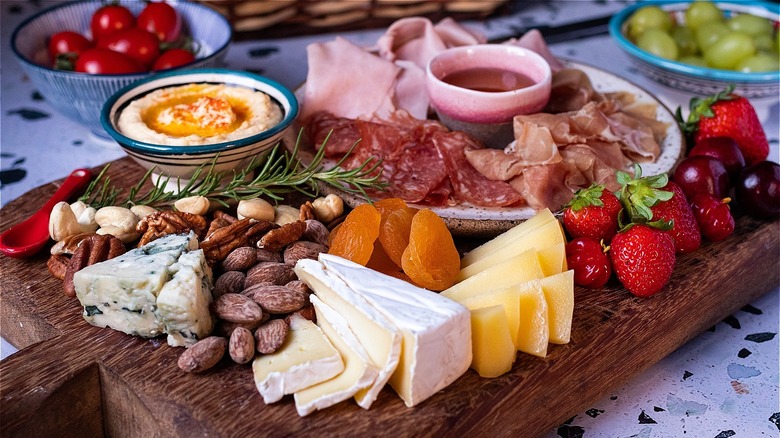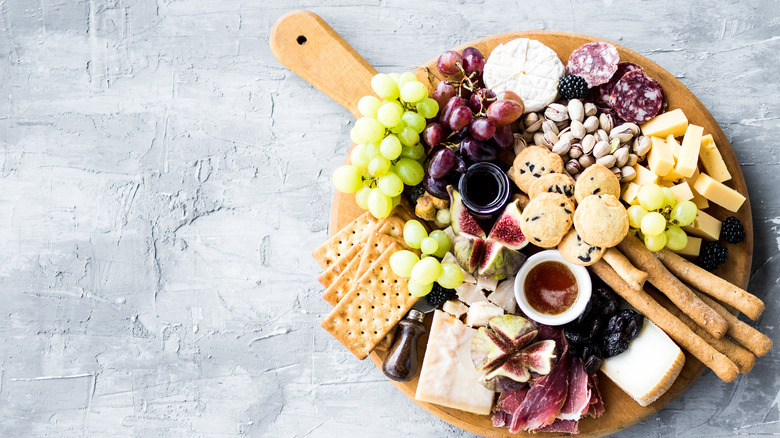The Unsettling Origins Of The Charcuterie Board
A charcuterie board is basically a spread of cheese, meat, nuts, and other sweet and savory finger foods — like a higher-end version of a snack tray you'd see out at parties. But for all their fancy cheeses and smoked meats, it's not hard to build the perfect charcuterie board. While you don't need to blow a lot of money on some expensive imported cheese from Switzerland, you also don't want to just chop up some Velveeta and call it a day. It's not so much about looking fancy, but more or less exploring different flavors, textures, and combinations that you and your guests have never tried before.
But where exactly does the idea of charcuterie come from? Who was the person to think it'd be a great idea to give people a bunch of meat, cheese, and fruit to eat while they mingle around your home? It seems that the French invented the culinary concept. Some sources, such as Foodicles, note that "charcuterie" is the French word for "cooked flesh" and was best used to describe fifteenth-century butcher shops that sold salted and smoked meats. While the country is known for fine dining, however, the origins of the charcuterie board are less than appetizing.
Charcuterie dishes were made with offal
According to Eat Cured Meat, the French weren't shy about using all parts of the meat when they invented charcuterie in the 15th century. All meat was worthy of being served, so certain pieces of meat that some may consider unappetizing today were included. This included offal (the entrails and internal organs of the animal) and even bones. Nothing quite stirs up conversation at a dinner party like gnawing on a bone or digging into smoked lower intestine.
As time went on, the styles of charcuterie became divided into traditional and modern charcuterie. Traditional charcuterie is the practice of continuing to serve all parts of the animal and seems to be in practice even today. One Reddit user, for example, suggested different ways of using the so-called "waste," such as making blood sausage, dried pork jowl, candles made from lard, and fried pig ears.
Moderncharcuterie is what you're probably more familiar with, replacing pig ears and kidneys with smoked kielbasa and smoked aged cheddar. This isn't to say that traditional charcuterie is bad, of course. Some people may enjoy it and others would rather stick to more conventional meats — it's all a matter of opinion. When you're assembling your spread, traditional or modern, it's always best to try to avoid these common mistakes with your charcuterie board.

